Gravitational Wave Sources
Neutron Stars and Pulsars
Fast Radio Bursts
Gravitational Wave Sources
Gravitational waves have opened a new window into the Universe. Understanding their origins is one of the most exciting challenges in modern astronomy. Most of the gravitational waves detected so far by the LIGO/Virgo/KAGRA collaboration come from merging binary black holes. Dense star clusters–young massive clusters and old globular clusters–are especially efficient at producing these mergers. Close gravitational encounters in such environments can reproduce the overall observed distribution of merger rates across black hole masses (Ye+, arXiv:2507.07183). Looking ahead, next-generation gravitational-wave detectors will probe much higher redshifts, offering powerful constraints on the cosmic evolution of binary black hole mergers (Ye+2024).
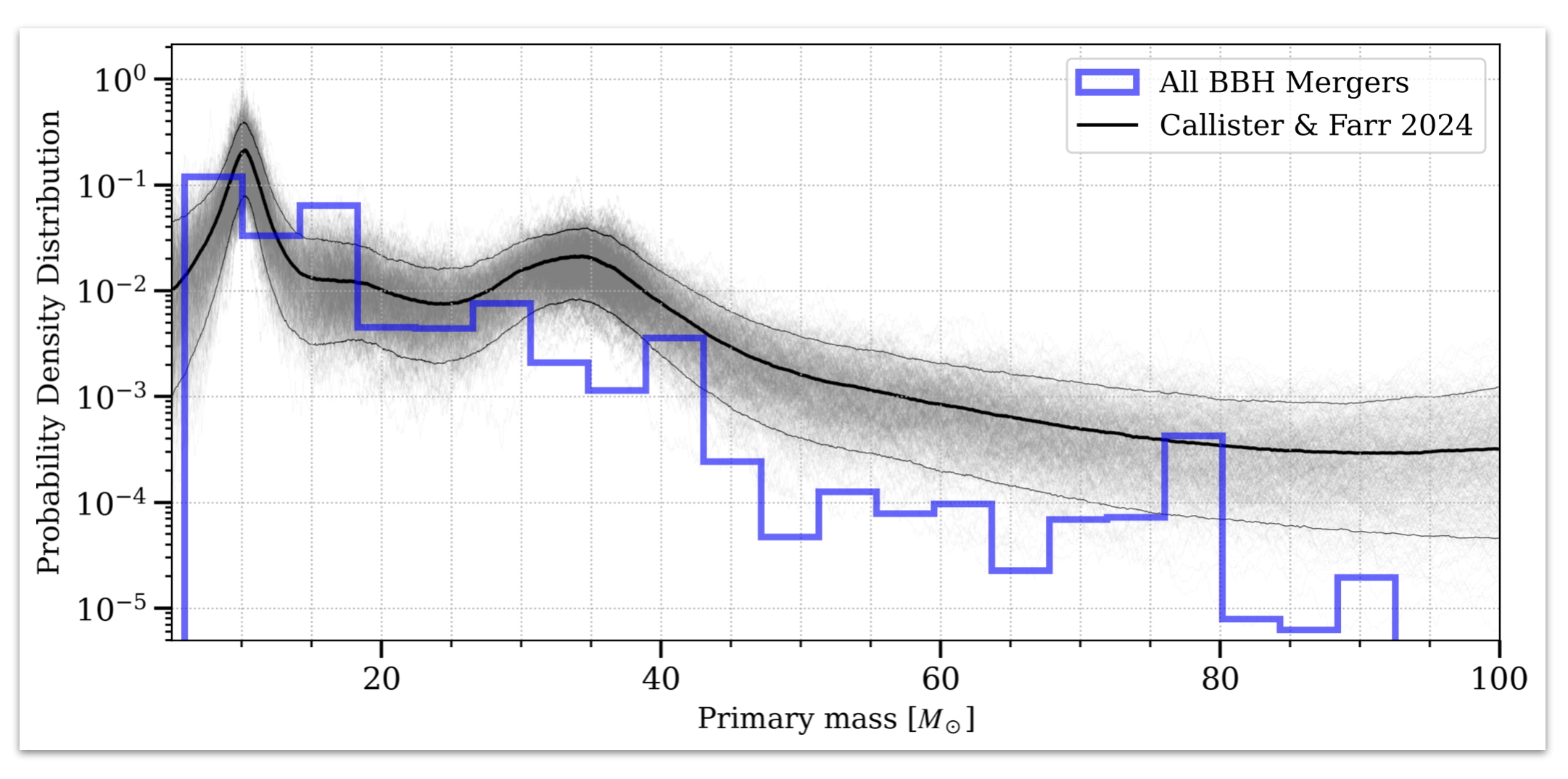
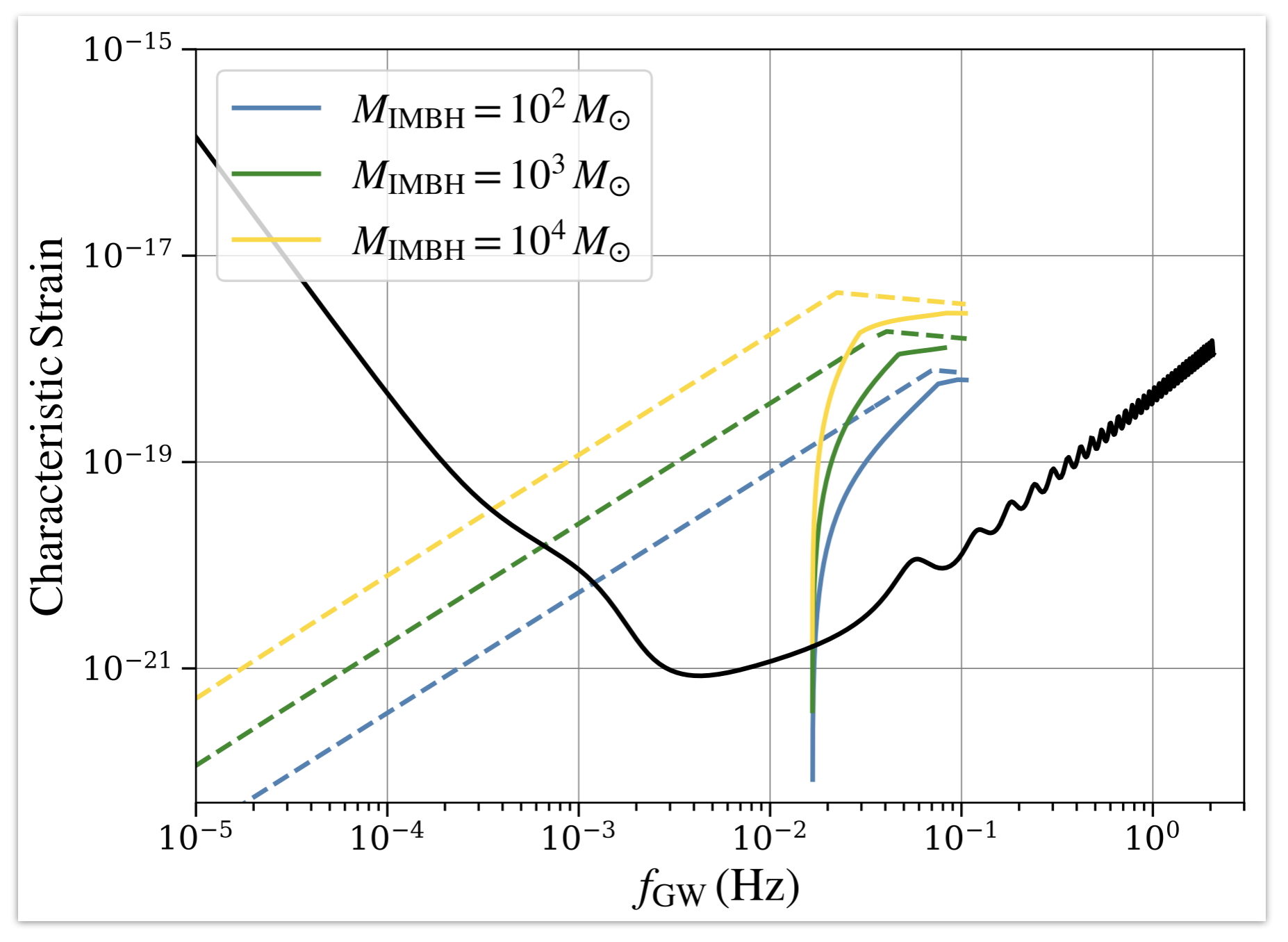 The inspiral of stellar-mass compact objects into central massive black holes also generates gravitational waves, which will be detectable with space-based observatories such as LISA. Scheduled to launch in about a decade, LISA will probe central massive black holes that are potential building blocks of supermassive black holes. For example, the inspiral of white dwarfs into central massive black holes in dense stellar systems could produce gravitational wave signals “visible” to LISA from distance of up to ~100 Mpc (Ye+2023).
The inspiral of stellar-mass compact objects into central massive black holes also generates gravitational waves, which will be detectable with space-based observatories such as LISA. Scheduled to launch in about a decade, LISA will probe central massive black holes that are potential building blocks of supermassive black holes. For example, the inspiral of white dwarfs into central massive black holes in dense stellar systems could produce gravitational wave signals “visible” to LISA from distance of up to ~100 Mpc (Ye+2023).
Neutron Star and Millisecond Pulsar Dynamics
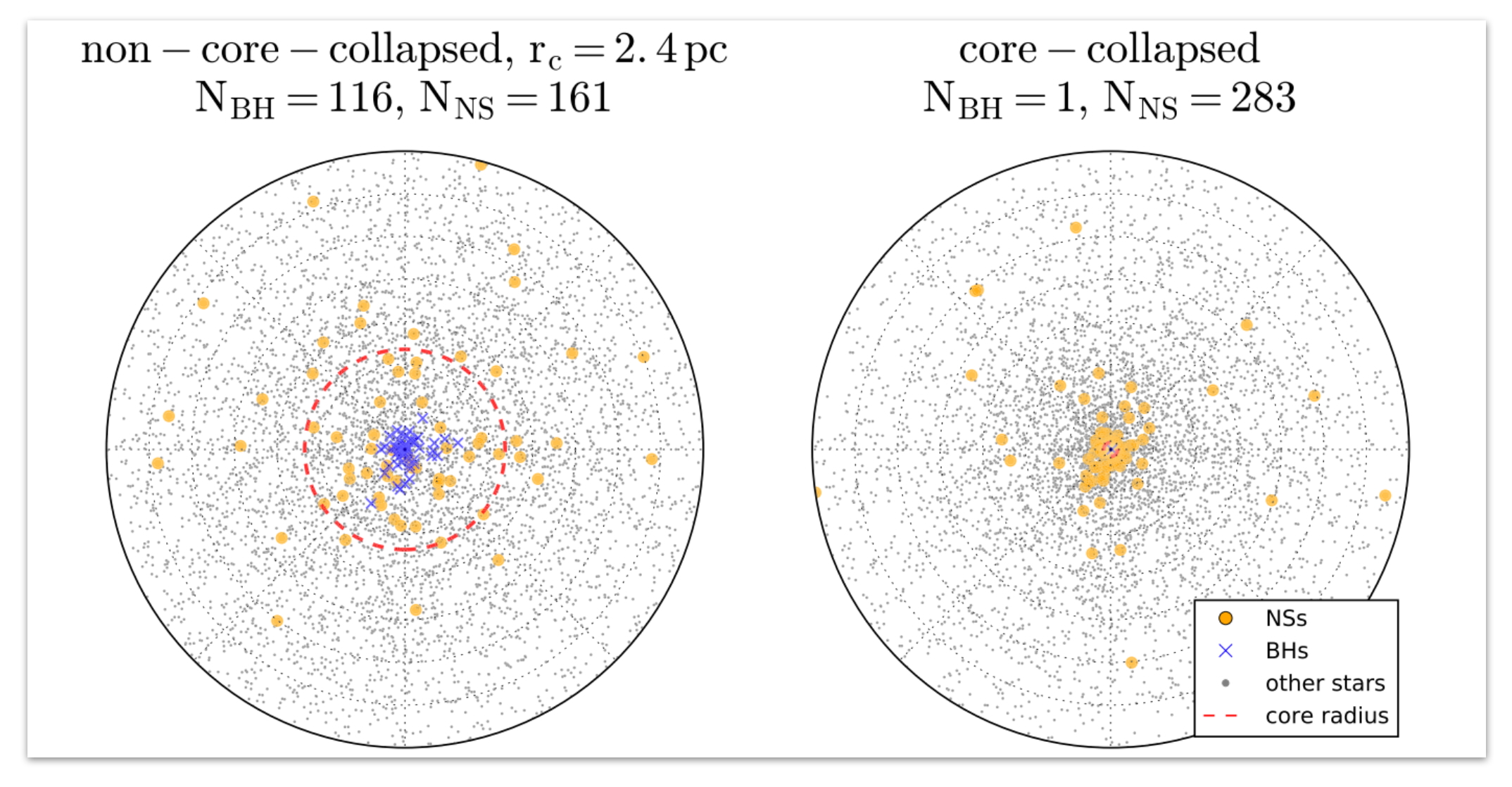 The compact objects (black holes, neutron stars and white dwarfs) in globular clusters are dynamically coupled. Due to mass segregation, black holes dominate the core of many globular clusters. Gravitational encounters within black holes and between black holes and other stars have significant effects on the evolution of other compact objects and their host clusters. In the figure below I show 2-dimentional projections of two typical globular clusters from simulations. The one on the left contains more than 100 black holes, and the one on the right has only one black hole. We can see that the positions of the neutron stars related to the center of their host clusters depend on the number/mass of black holes in the clusters. This coupling leads to many interesting results such as the anti-correlation between the numbers of millisecond pulsars and black holes in globular clusters (Ye+2019), and the low merger rate of double neutron star and neutron star-black hole binaries from globular clusters (Ye+2020).
The compact objects (black holes, neutron stars and white dwarfs) in globular clusters are dynamically coupled. Due to mass segregation, black holes dominate the core of many globular clusters. Gravitational encounters within black holes and between black holes and other stars have significant effects on the evolution of other compact objects and their host clusters. In the figure below I show 2-dimentional projections of two typical globular clusters from simulations. The one on the left contains more than 100 black holes, and the one on the right has only one black hole. We can see that the positions of the neutron stars related to the center of their host clusters depend on the number/mass of black holes in the clusters. This coupling leads to many interesting results such as the anti-correlation between the numbers of millisecond pulsars and black holes in globular clusters (Ye+2019), and the low merger rate of double neutron star and neutron star-black hole binaries from globular clusters (Ye+2020).
Single Millisecond Pulsars
Simulating Pulsars and Compact Objects in the Globular Cluster 47 Tucanae
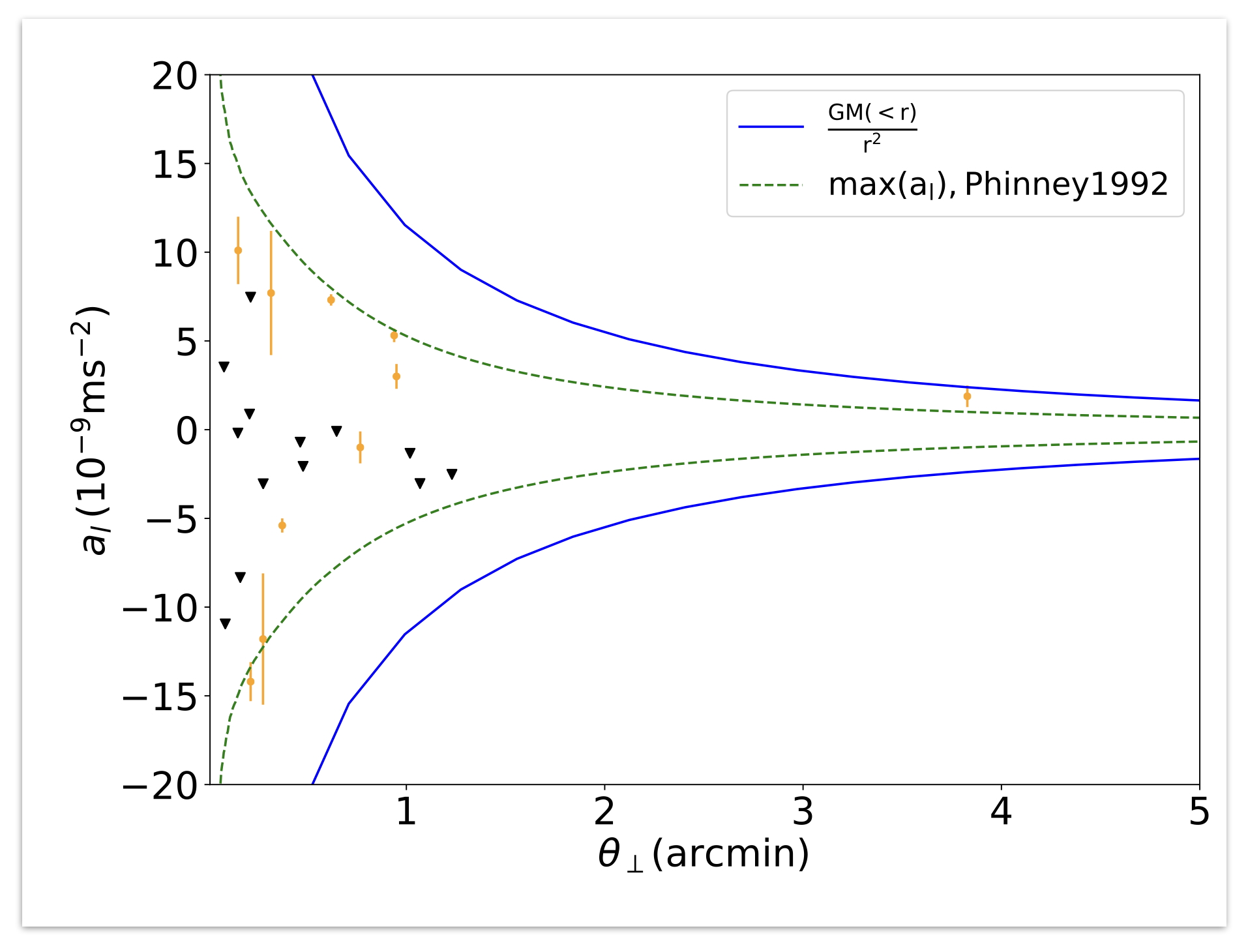 47 Tucanae is one of the most massive and densest globular clusters in the Milky Way and is very computationally challenging to simulate. Observations have shown that this cluster contains large populations of compact objects, so it is one of the best observational target to study globular cluster dynamics and compact object evolution. I show that by using the Cluster Monte Carlo code, I was able to achieve a best-fit 47 Tuc model that matches various observations simultaneously, including the surface brightness profile, the velocity dispersion profile, pulsar accelerations, and the number of different types of compact objects (Ye+2021).
47 Tucanae is one of the most massive and densest globular clusters in the Milky Way and is very computationally challenging to simulate. Observations have shown that this cluster contains large populations of compact objects, so it is one of the best observational target to study globular cluster dynamics and compact object evolution. I show that by using the Cluster Monte Carlo code, I was able to achieve a best-fit 47 Tuc model that matches various observations simultaneously, including the surface brightness profile, the velocity dispersion profile, pulsar accelerations, and the number of different types of compact objects (Ye+2021).
Pulsar Magnetic Fields and Spin Periods
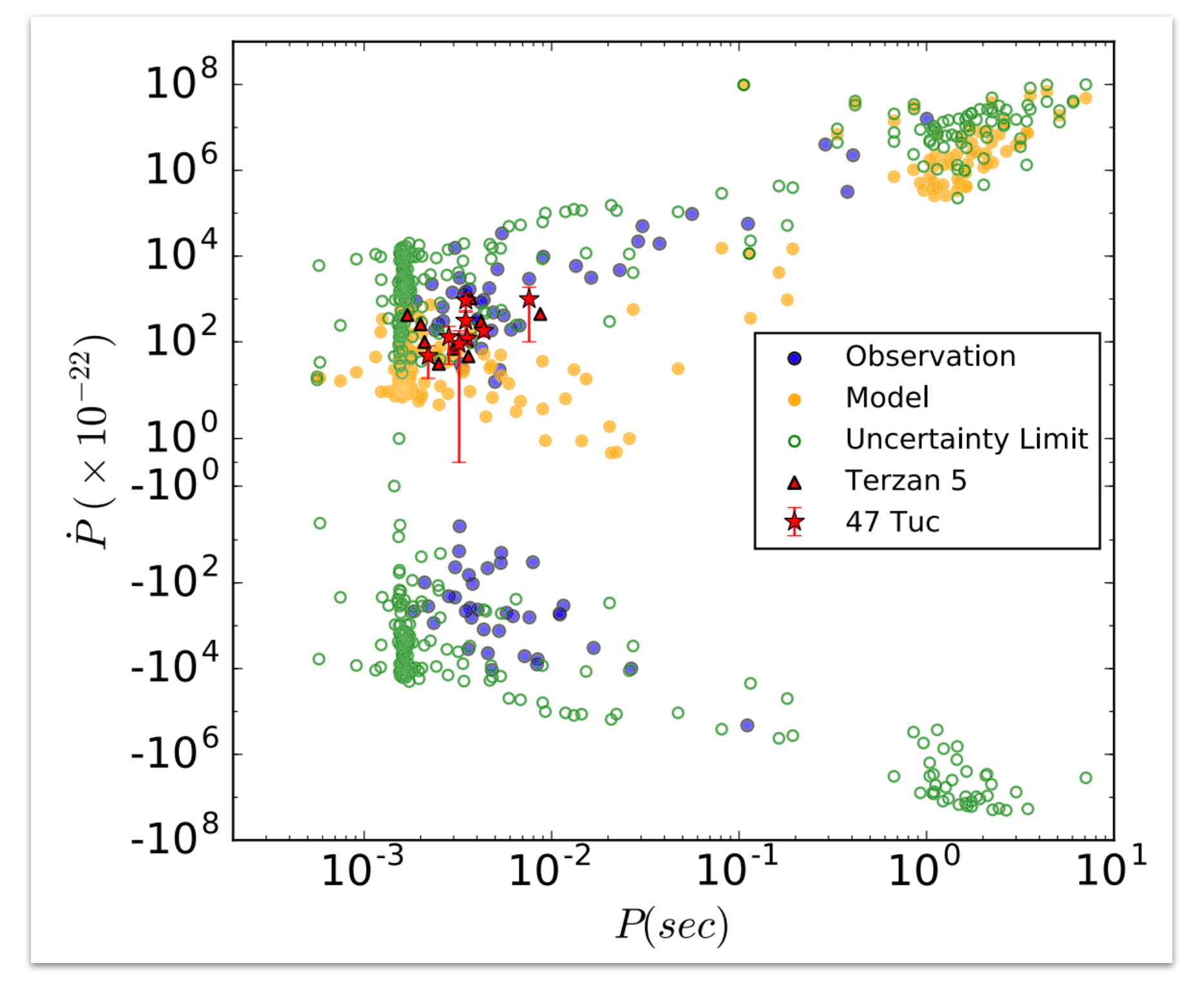 It is well known that globular clusters produce millisecond pulsars at a specific abundance 10 times larger than the Galactic field due to the high density and large stellar encounter rate of the cluster environment. However, the high uncertainty of pulsar formation and evolution, and the chaotic dynamical environment of globular clusters make it especially challenging to model pulsars in globular clusters. Using Monte Carlo N-body cluster simulations, I showed that dynamical interactions greatly enhance millisecond pulsar formation in globular clusters, and pulsars are spun-up to millisecond periods through extended periods of mass trasfer in binaries. The spin periods and spin-dwon rates (which can be used to derive dipole magnetic fields) of simulated pulsars largely match the observed pulsars in globular clusters shown in the figure on the left (Ye+2019).
It is well known that globular clusters produce millisecond pulsars at a specific abundance 10 times larger than the Galactic field due to the high density and large stellar encounter rate of the cluster environment. However, the high uncertainty of pulsar formation and evolution, and the chaotic dynamical environment of globular clusters make it especially challenging to model pulsars in globular clusters. Using Monte Carlo N-body cluster simulations, I showed that dynamical interactions greatly enhance millisecond pulsar formation in globular clusters, and pulsars are spun-up to millisecond periods through extended periods of mass trasfer in binaries. The spin periods and spin-dwon rates (which can be used to derive dipole magnetic fields) of simulated pulsars largely match the observed pulsars in globular clusters shown in the figure on the left (Ye+2019).